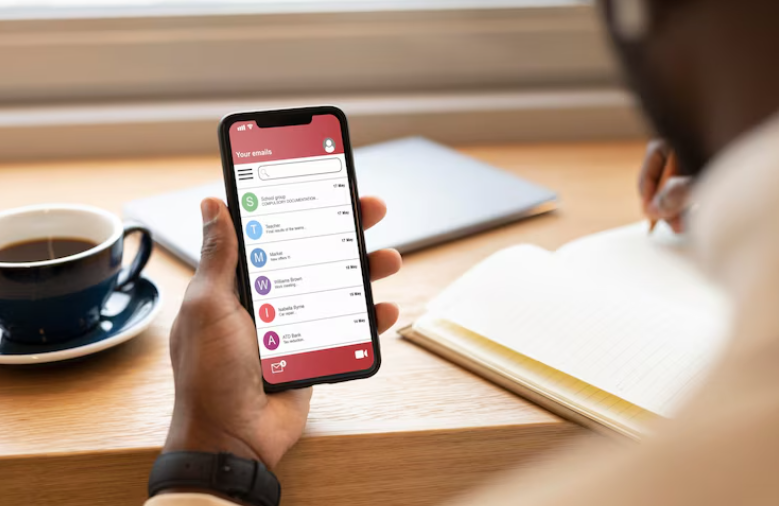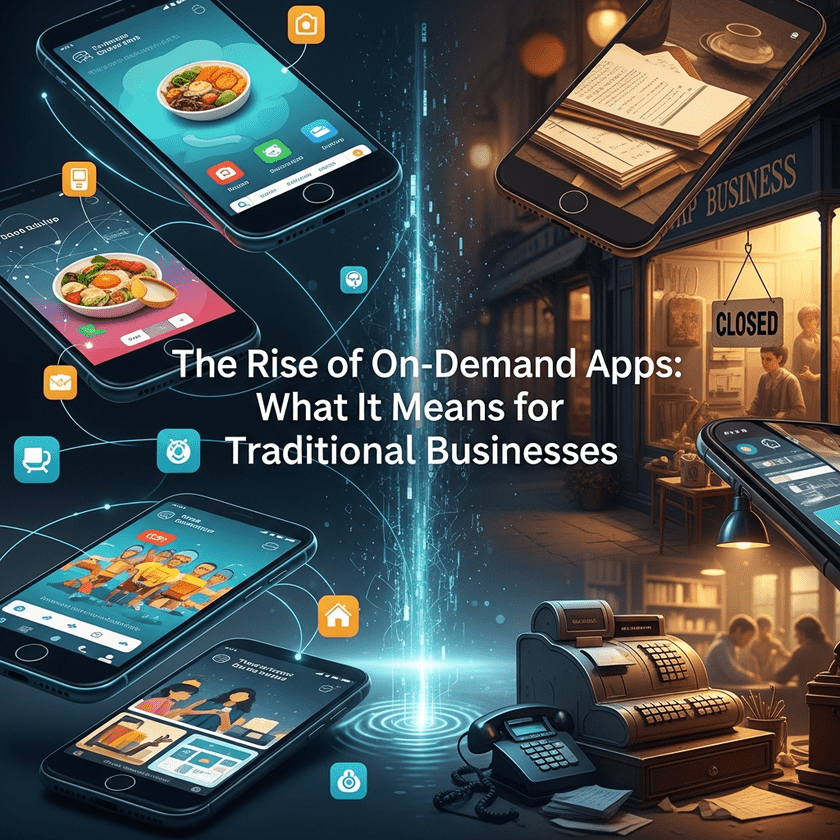In the competitive world of mobile app development, moving from an idea to the final product is usually the line that separates progress and stagnation. This is when mobile app prototypes shine, providing a revolutionary method for rapid prototyping. Prototypes that use mobile apps can implement the principles of a speedier development cycle, which allows experienced entrepreneurs and developers with little programming experience to quickly develop their ideas.
The emergence of mobile app prototype development is a major change in the practice of software development. In the past, developing mobile apps was time-consuming and required special skills, as well as months of development and a significant capital investment.
Understanding the MVP in Mobile App Development
The path of mobile application development is a quite risky. However, the MVP strategy serves as a lighthouse, helping businesses and developers navigate the sea of confusion. An MVP isn't just a product; it's a planned release designed to provoke responses and gain data from the target market. By focusing on the most important aspects, MVPs test the app's potential and provide insight into its potential to investors as well as users.
More than a test run, the first MVP could create revenues and spark investors' interest, setting the tone for the eventual success.
Defining MVP and Its Purpose
The MVP approach to app development highlights:
Focus and simplicity
The core of your app's concept
Unique solutions to address actual user issues
Engaging the viewers
Introducing an app into the market in a frenzied manner
Allowing businesses to discover, improve and scale their operations with the utmost precision
This strategy not only helps obtain early feedback adoption but also ensures that the app is market-fit, which is an essential stage for any mobile app.
Value of MVP for Startups and Established Companies
The MVP development process is a gambit that can benefit both established and start-up businesses. For entrepreneurs, it's a way to test market sentiment and a means to adjust quickly to feedback from users without consuming resources. For established businesses, using an MVP will demonstrate their potential to attract users who are not yet there and gain funding from investors without a large initial investment.
The essence of creating an MVP application is about creating an agile, focused product that can serve as a springboard for growth and future innovation.
Difference Between an MVP and Beta Version
An MVP app for mobile devices is released to test the most risky theories and assess whether the product meets the market's needs. It is limited to features essential to the validation process and focuses on a small group of users, mostly internal stakeholders and a small number of early adopters.
The Beta version is released after the main assumptions have been verified. It is a polished release that includes almost all of the planned features and aims at a greater number of users. The purpose of an alpha release is to fix bugs and make final adjustments prior to an official release.
Right Tools for Mobile App Prototyping
Choosing the best tool to develop mobile app prototypes can facilitate the process and make it more flexible and efficient. Here are a few of the most popular options, as well as their advantages:
Figma
Figma is well-known for its ability to collaborate in real-time, which makes it a good option for distributed teams. It lets several designers and other participants simultaneously work on a single project and provides live feedback capabilities. Figma includes interactive elements, making testing user flows and simulating interactions easier. Its cloud-based nature also means there's no need for extensive file transfers--everything is accessible through the browser.
Sketch
Sketch is renowned for its intuitive user interface and is popular among designers who focus on high-fidelity designs. It is particularly adept at editing vectors and has powerful plug-ins that boost its capabilities, like Anima, which creates advanced animations and Zeplin, which handles design handoffs. While Sketch is only available for Mac, it is compatible with other software, making it an excellent option for creating precise UI components and designing systems.
Adobe XD
Adobe XD is a comprehensive prototyping tool that has solid capabilities for UX and UI design requirements. It comes with various tools for wireframe, vector design and interactive prototyping, all in one place. The Adobe XD's "Auto-Animate" feature allows designers to design micro-interactions and transitions that add a layer of real-world realism to prototypes. Integration with various Adobe Creative Cloud software is ideal for teams who already utilise Adobe's suite of tools.
Why Businesses Should Invest in Mobile App Prototyping?
App prototyping is sketching out the process of an idea's application. It allows you to create a rough representation of the desired application and explore new ideas and solutions earlier in the software development process. A mobile application prototype is an active and interactive representation of a final product.
By doing this, an accurate overview is available to all parties involved in the application's structure and design. So, any changes that are required to the app's design can be identified prior to the development process. Mobile Prototypes convert a creative vision into a real product. This is why a mobile prototype helps to align the need for developing an application with a business's objectives.
Other advantages of a mobile application prototype are:
Involvement of all Stakeholders
A prototype app can assist in engaging the client and other stakeholders throughout the product's development. While designers build an initial prototype and consider possibilities, customers and others involved in the process can participate and provide feedback. Client preferences for achieving certain project objectives can be discussed. The app's feasibility can be evaluated using sample real-time users. Comprehensive solutions can be used to eliminate gray areas and guarantee that the application will be 100% perfect in every aspect.
Streamlines the Budget and Schedule
An initial prototype can identify the entire process and costs involved in creating a mobile application. This can help in planning and the precise assigning of developers. Involving all stakeholders can also help determine the most appropriate budget for the project. Thus, the technology required, the quantity of resources and the amount of time needed to develop an application are identified with the help of a prototype. This eliminates uncertainty regarding both the cost and development.
Prediction of Success
As mentioned previously, prototypes will be utilised by chosen real-time users. Their comments on the first version of the mobile application will give valuable insight into how it will ultimately be received by its intended audience. Additionally, it can provide an excellent overview of the app's demand in the market at the time. By analysing this information, an organisation or a group looking to create an app for mobile devices can determine the most appropriate time to launch the application on the market.
Working Model
The mobile app prototype is actually a functioning prototype of the final product; however, it does not appear to users. The entire development process is communicated to the developers and other parties right from the beginning, leaving plenty of room for changes and improvements to be made to the end model. The prototype model will help capture the initial concept, its usability and the final product.
Mobile App Prototyping Process
The process of prototyping mobile apps requires several steps, from understanding the project's needs to testing and improving the prototype. Each step plays an important function in ensuring that the prototype corresponds to the final product and meets the users' needs and expectations.
The prototyping process generally begins with a brainstorming session in which the team discusses the project's requirements and formulates preliminary design concepts. The next step is sketching, during which the team sketches rough designs of the app's screen. These sketches are later utilised to create the paper prototype, which acts as a visual guide to creating the prototype digitally.
Define Goals and Scope
Begin by identifying your application's primary features and purpose. Consider prototyping to test hypotheses instead of completely implementing every aspect. To make a prototype efficient, your team needs to agree on the most crucial elements to consider and then evaluate.
Create Wireframes
Wireframes are the basic blueprints that show the app's structure. At this point, the focus will be on layout, but not any attention to the design. Wireframes can be created in pencil, by hand or by using tools such as Figma or Sketch.
Design the UI Elements
Create a high-quality prototype with design elements such as typography, color schemes and button designs. This prototype should closely resemble the final product to give accurate feedback on the user experience.
Testing with users
Test the usability of your high-fidelity prototype to find areas that need improvement. Gather qualitative and quantitative feedback on tasks, such as completion time and user-friendliness.
Refine and Iterate
Based on the feedback you receive, refine the app until it meets your expectations and users' needs. Each revision will bring the app closer to its ideal design, thereby saving development time in the future.
Conclusion
Prototyping mobile apps is an important stage in the mobile app development process. It allows developers to visualise and check the app's layout and functions before actual development gets underway, which saves time and energy. Through the creation of a prototype, developers will gain insight into the flow of the app and interactions, making the app more user-friendly.
Furthermore, custom mobile app prototyping allows users to give feedback early, making sure the product meets the users' needs and expectations. With the right tools and methods, prototyping mobile apps can greatly improve the development process and increase the likelihood of a successful app.






